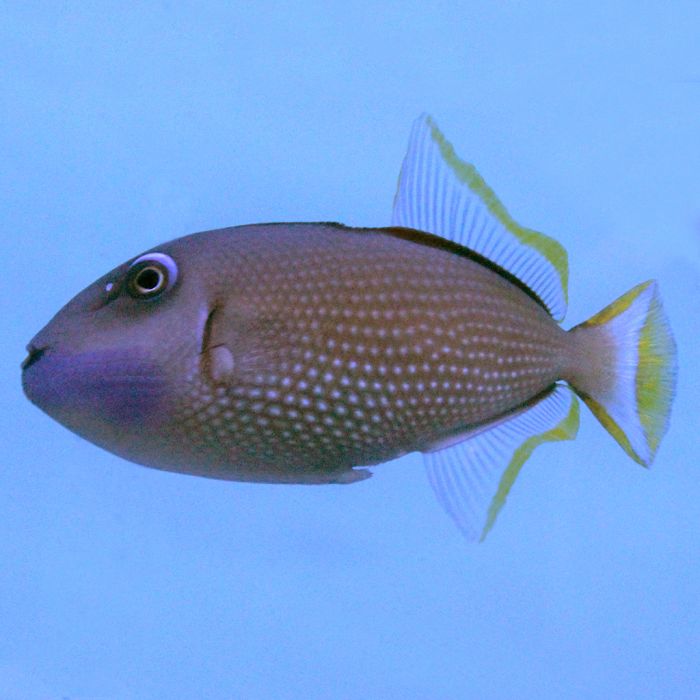Blue Throat (Male) Trigger (Asia Pacific)
Triggerfish are extremely personable and entertaining, and make great tank mates with other fish of similar size or temperament. They will eat invertebrates, especially shrimp, but also other crustaceans, mollusks, bivalves, sponges, tunicates, feather dusters and more. They may move and flip over rocks to search for food underneath. They do not typically bother corals. They may chase and bully other fish, especially those smaller than themselves. They may be aggressive with other triggerfish and two should only be kept together in sufficiently large aquariums.
Triggerfish are named for their first dorsal fin which is typically kept flat against their back but can be cocked into an upright position and cannot be forced down. When threatened they swim into the smallest cave they can fit in and lock their fin up which makes them impossible to be dislodged by predators. This fin may also become tangled in nets.
Triggerfish are carnivores and should be fed two to three times a day a high quality diet of meaty items such as Mysis shrimp, krill, silversides, clams, and chopped seafood. Hard shelled items are important to keep their teeth in good shape. Algae clips with nori are a favorite treat and may be quickly devoured. They are easy to keep and usually learn to eat dry foods as well. Triggerfish are heavy feeders and thus strong filtration is necessary.
The Blue Throat trigger is a popular fish with distinctive coloration differences between males and females. Males sport the distinctive bright blue throat as well as lemon yellow edges to their fins. Females have rusty red edging to their fins. Specimens from all locations have similar patterns, but those from Hawaii have the brightest colors. Both sexes have a steely colored body and a bright spot on each scale. It is usually safe with most invertebrates, with the exception of shrimp. It grows up to 9 inches and requires an aquarium of at least 125 gallons. Pairs or harems may be added together to large aquariums.
















